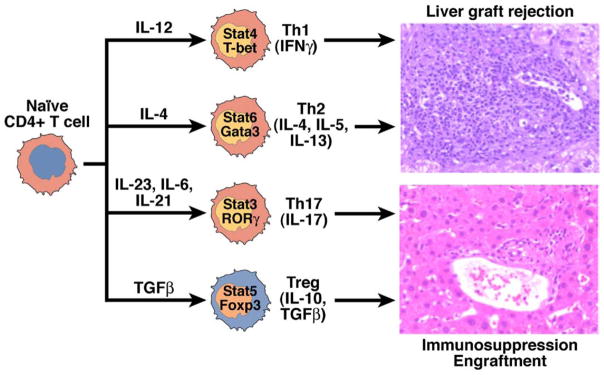Figure 2.

Lineage commitment of naïve CD4+ T cells. Upon activation by cognate antigens and costimulatory signals, recipient naïve CD4+ T cells acquire graft-destructive or graft-protective phenotypes, depending on the local cytokine microenvironment in which T-cell activation occurs. In the presence of the proinflammatory cytokines IL-12 or IL-4, CD4+ T cells become Th1 or Th2 cells, respectively. The presence of TGF-β and the absence of proinflammatory cytokines turns donor-activated CD4+ T cells into tissue-protective Foxp3+ Treg cells and prevents T cells from becoming tissue-destructive Th17 or Th1 cells. In contrast, if TGF-β is present with IL-6 or IL-21, the generation of Tregs is blocked and CD4+T cells acquire the Th17 phenotype. Each of these subsets expresses specific transcription factors and combinations of cytokines.
